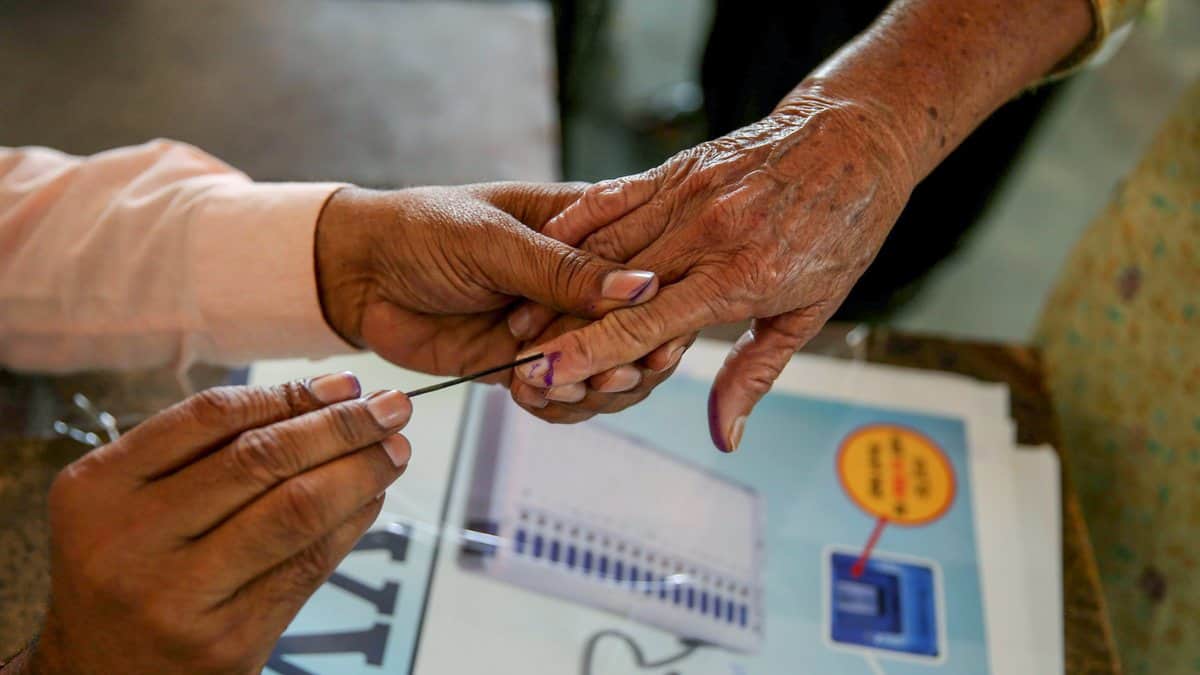In the recent case of ‘Union Territory of Laddakh v. Jammu and Kashmir National Conference (2023)’, the Supreme Court while deciding a case related to the party’s symbol made important comments on this issue.
The court said,
“We are seeing before us judgments and orders by High Courts not deciding cases on the ground that the leading judgment of this Court on this subject is either referred to a larger Bench or a review petition relating thereto is pending. We have also come across examples of High Courts refusing deference to judgments of this Court on the score that a later Coordinate Bench has doubted its correctness. In this regard, we lay down the position in law.
We make it absolutely clear that the High Courts will proceed to decide matters on the basis of the law as it stands. It is not open, unless specifically directed by this Court, to await an outcome of a reference or a review petition, as the case may be. It is also not open to a High Court to refuse to follow a judgment by stating that it has been doubted by a later Coordinate Bench.
In any case, when faced with conflicting judgments by Benches of equal strength of this Court, it is the earlier one which is to be followed by the High Courts, as held by a 5-Judge Bench in National Insurance Company Limited v Pranay Sethi, (2017) 16 SCC 6805. The High Courts, of course, will do so with careful regard to the facts and circumstances of the case before it.
We are conscious that, by way of certain pronouncements, some of which are alluded to in this judgment, the Court extended principles relating to elections to Parliament, State Assemblies and Municipalities to other arenas as well. Indicatively, the interpretation of judgments is always to be made with due regard to the facts and circumstances of the peculiar case concerned. We have looked at Articles 243-O, 243ZG and 329 of the Constitution, and conclude that no bar hit the High Court, even on principle.
Apart from the judgments expressly considered and dealt with, hereinbefore and hereinafter, we have perused, out of our own volition, the decisions, inter alia, of varying Bench-strength of this Court in N P Ponnuswami v Returning Officer, Namakkal Constituency, 1952 SCR 2187; Durga Shankar Mehta v Thakur Raghuraj Singh, (1955) 1 SCR 267; Hari Vishnu Kamath v Syed Ahmad Ishaque, (1955) 1 SCR 1104;
Narayan Bhaskar Khare (Dr) v Election Commission of India, 1957 SCR 1081; Mohinder Singh Gill v Chief Election Commissioner, (1978) 1 SCC 405; Lakshmi Charan Sen v A K M Hassan Uzzaman, (1985) 4 SCC 689; Indrajit Barua v Election Commission of India, (1985) 4 SCC 722; Election Commission of India v Shivaji, (1988) 1 SCC 277; Digvijay Mote v Union of India, (1993) 4 SCC 1758; Boddula Krishnaiah v State Election Commissioner, Andhra Pradesh, (1996) 3 SCC 416; Anugrah Narain Singh v State of Uttar Pradesh, (1996) 6 SCC 303;
Election Commission of India v Ashok Kumar, (2000) 8 SCC 216; Kishansing Tomar v Municipal Corporation, Ahmedabad, (2006) 8 SCC 352; West Bengal State Election Commission v Communist Party of India (Marxist), (2018) 18 SCC 141; Dravida Munnetra Kazhagam v State of Tamil Nadu, (2020) 6 SCC 548; Laxmibai v Collector, (2020) 12 SCC 186, and last but not the least, State of Goa v Fouziya Imtiaz Shaikh, (2021) 8 SCC 4019. On scrutiny, in combination with the timelines and facts of the matter herein, we are sure that the High Court did not falter.
We would indicate that the restraint, self-imposed, by the Courts as a general principle, laid out in some detail in some of the decisions supra, in election matters to the extent that once a notification is issued and the election process starts, the Constitutional Courts, under normal circumstances are loath to interfere, is not a contentious issue.
But where issues crop up, indicating unjust executive action or an attempt to disturb a level-playing field between candidates and/or political parties with no justifiable or intelligible basis, the Constitutional Courts are required, nay they are duty-bound, to step in.
The reason that the Courts have usually maintained a hands-off approach is with the sole salutary objective of ensuring that the elections, which are a manifestation of the will of the people, are taken to their logical conclusion, without delay or dilution thereof. In the context of providing appropriate succour to the aggrieved litigant at the appropriate time, the learned Single Judge acted rightly.
This case constrains the Court to take note of the broader aspect of the lurking danger of authorities concerned using their powers relating to elections arbitrarily and thereafter, being complacent, rather over-confident, that the Courts would not interfere.
The misconceived notion being that in the ultimate eventuate, after elections are over, when such decisions/actions are challenged, by sheer passage of time, irreversible consequences would have occurred, and no substantive relief could be fashioned is just that – misconceived.
However, conduct by authorities as exhibited herein may seriously compel the Court to have a comprehensive re-think, as to whether the selfimposed restrictions may need a more liberal interpretation, to ensure that justice is not only done but also seen to be done, and done in time to nip in the bud any attempted misadventure.
The Court would categorically emphasize that no litigant should have even an iota of doubt or an impression (rather, a misimpression) that just because of systemic delay or the matter not being taken up by the Courts resulting in efflux of time the cause would be defeated, and the Court would be rendered helpless to ensure justice to the party concerned. It would not be out of place to mention that this Court can even turn the clock back, if the situation warrants such dire measures.“
Reference
Union Territory of Laddakh v. Jammu and Kashmir National Conference (2023)
